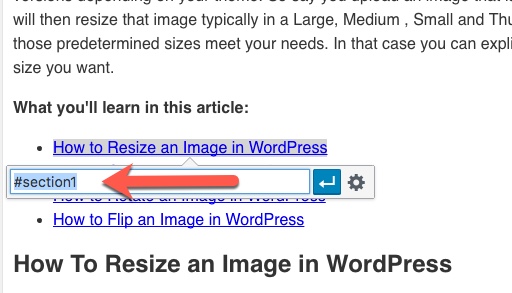

It’s a simple implementation that can have a great impact on the usability of your site. If you click on the link, the page will skip to the relevant section you specify. We use them at WPKube to help you jump to the different steps in tutorials: It’s specific to a piece of content, and will take you to a later point on the page. In a general sense, an anchor link is a clickable piece of inline navigation. Before we get into the different ways you can add them, let’s talk about what they are, and what they can do for you. To show you how straightforward it is to use them, this post will look at WordPress anchor links. It’s a top-notch UX consideration, and something most site owners should think about. This lets a reader jump around a post if they wish without losing their way. You can place them anywhere, but headings are a common use case. WordPress anchor links are a staple for your content’s UX.Ĭonsider anchor links as inline navigation for the post in question. If you marry both of these, you’ll often consider ways to help the UX of your content. What’s more, blog content – in general, reading your site’s pages – has lots of value. A lot of the design choices you’ll make around your site reference usability and the User Experience (UX).


 0 kommentar(er)
0 kommentar(er)
